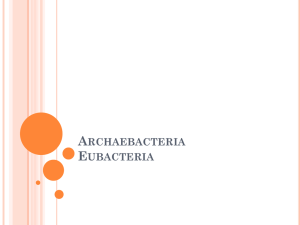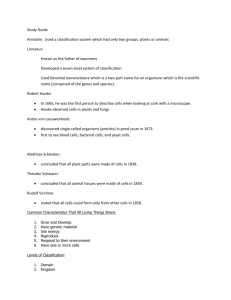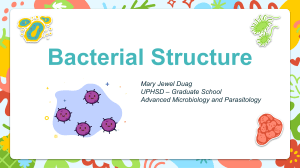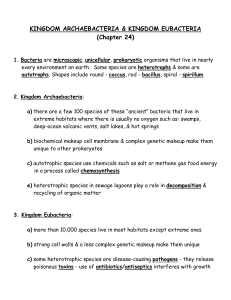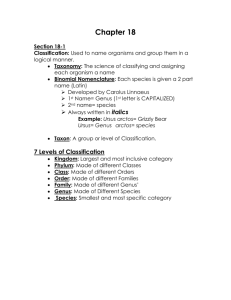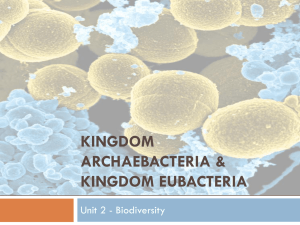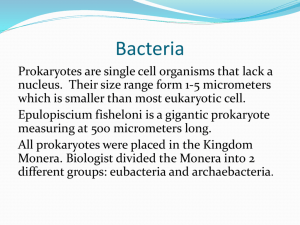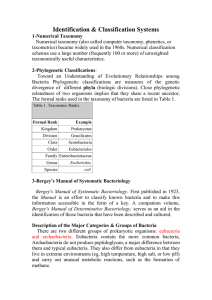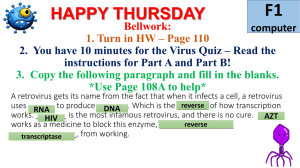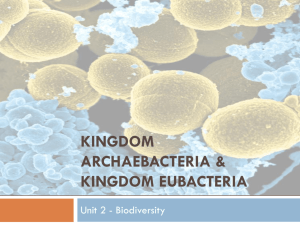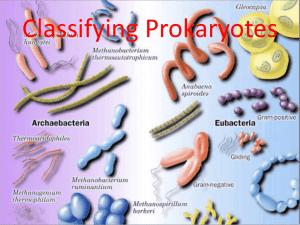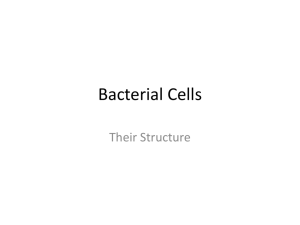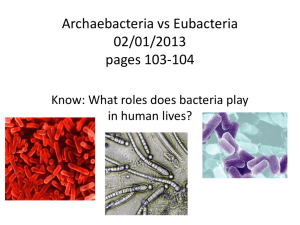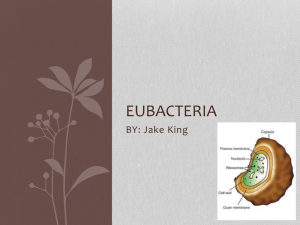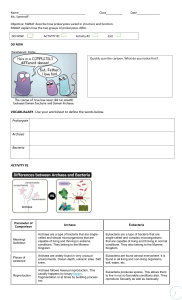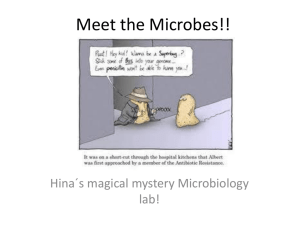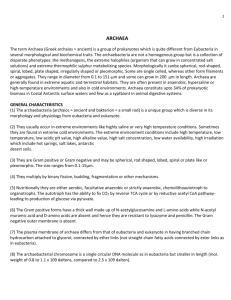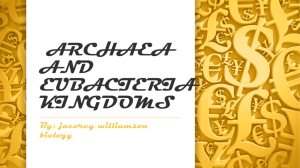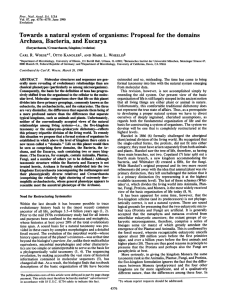Explore Archaebacteria and Eubacteria
advertisement
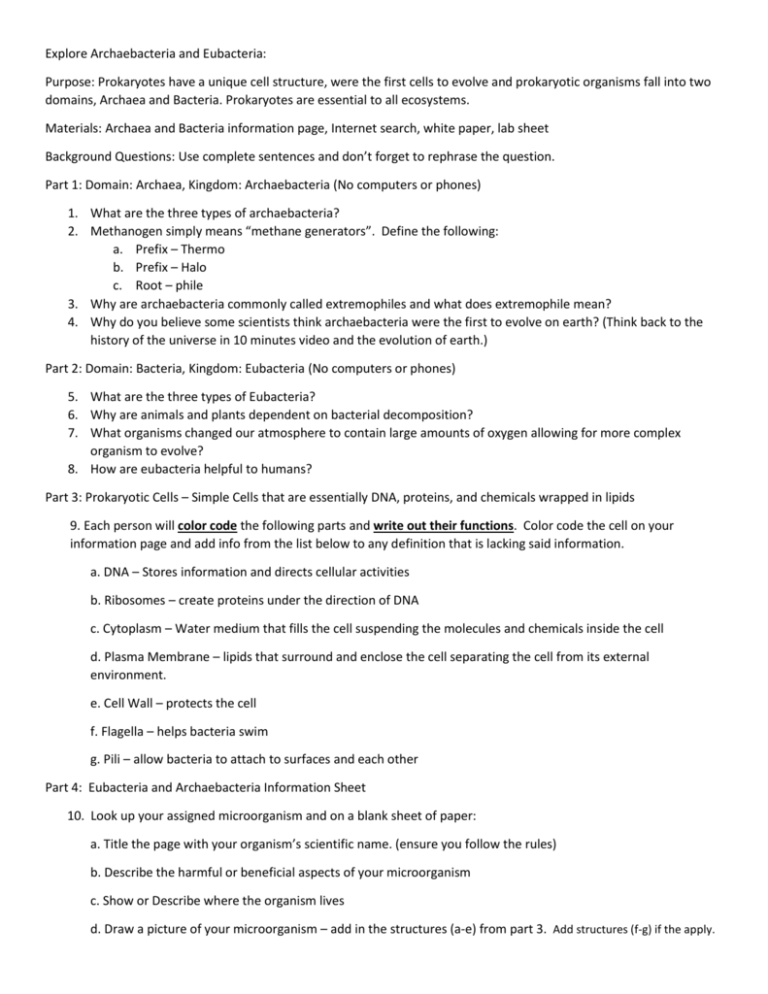
Explore Archaebacteria and Eubacteria: Purpose: Prokaryotes have a unique cell structure, were the first cells to evolve and prokaryotic organisms fall into two domains, Archaea and Bacteria. Prokaryotes are essential to all ecosystems. Materials: Archaea and Bacteria information page, Internet search, white paper, lab sheet Background Questions: Use complete sentences and don’t forget to rephrase the question. Part 1: Domain: Archaea, Kingdom: Archaebacteria (No computers or phones) 1. What are the three types of archaebacteria? 2. Methanogen simply means “methane generators”. Define the following: a. Prefix – Thermo b. Prefix – Halo c. Root – phile 3. Why are archaebacteria commonly called extremophiles and what does extremophile mean? 4. Why do you believe some scientists think archaebacteria were the first to evolve on earth? (Think back to the history of the universe in 10 minutes video and the evolution of earth.) Part 2: Domain: Bacteria, Kingdom: Eubacteria (No computers or phones) 5. What are the three types of Eubacteria? 6. Why are animals and plants dependent on bacterial decomposition? 7. What organisms changed our atmosphere to contain large amounts of oxygen allowing for more complex organism to evolve? 8. How are eubacteria helpful to humans? Part 3: Prokaryotic Cells – Simple Cells that are essentially DNA, proteins, and chemicals wrapped in lipids 9. Each person will color code the following parts and write out their functions. Color code the cell on your information page and add info from the list below to any definition that is lacking said information. a. DNA – Stores information and directs cellular activities b. Ribosomes – create proteins under the direction of DNA c. Cytoplasm – Water medium that fills the cell suspending the molecules and chemicals inside the cell d. Plasma Membrane – lipids that surround and enclose the cell separating the cell from its external environment. e. Cell Wall – protects the cell f. Flagella – helps bacteria swim g. Pili – allow bacteria to attach to surfaces and each other Part 4: Eubacteria and Archaebacteria Information Sheet 10. Look up your assigned microorganism and on a blank sheet of paper: a. Title the page with your organism’s scientific name. (ensure you follow the rules) b. Describe the harmful or beneficial aspects of your microorganism c. Show or Describe where the organism lives d. Draw a picture of your microorganism – add in the structures (a-e) from part 3. Add structures (f-g) if the apply.
